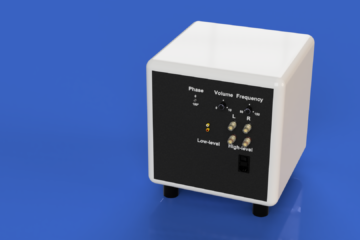There was a common misconception years ago that to improve your listening room you should adopt an egg-based diet… After all, those boxes wouldn’t find themselves.
While there certainly are some reasons for throwing a load of foam or egg boxes up, in the real world they really aren’t all that useful, are likely to get you divorced or become a fire hazard.
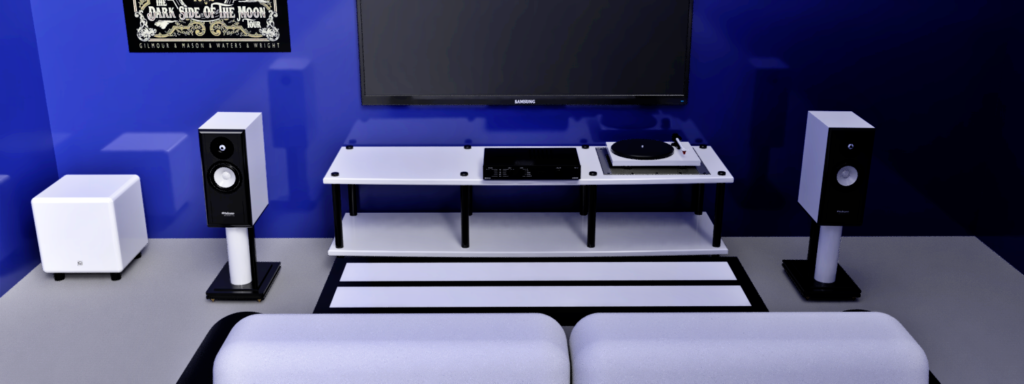
Let’s look at a few simple ways to help yourself get better sound. We’re more than aware that it’s not an exhaustive list, but it’s a good foundation. And we all know what happens with a good foundation.
Take your speakers out of the corners and away from the side walls
There are loads of reasons to do this, but the modal resonances in your room are increasingly excited towards the corners and narrow gaps (for instance in the gap between the speaker and the wall if its small enough), which colours your sound, usually an unpleasant way.
Try to place most of the glass in a room on the same wall as your speakers
Having a wall of glass behind you is not an easy thing to deal with. Glass to your left or your right is much easier to deal with, but still not the best option. The best place for that wall of glass is behind your speakers. A well-designed speaker projects sound towards you and, for all the misinformation there is out there about standing waves and reflections, the best place for glass is behind a speaker.
Put some space between your speakers and back wall
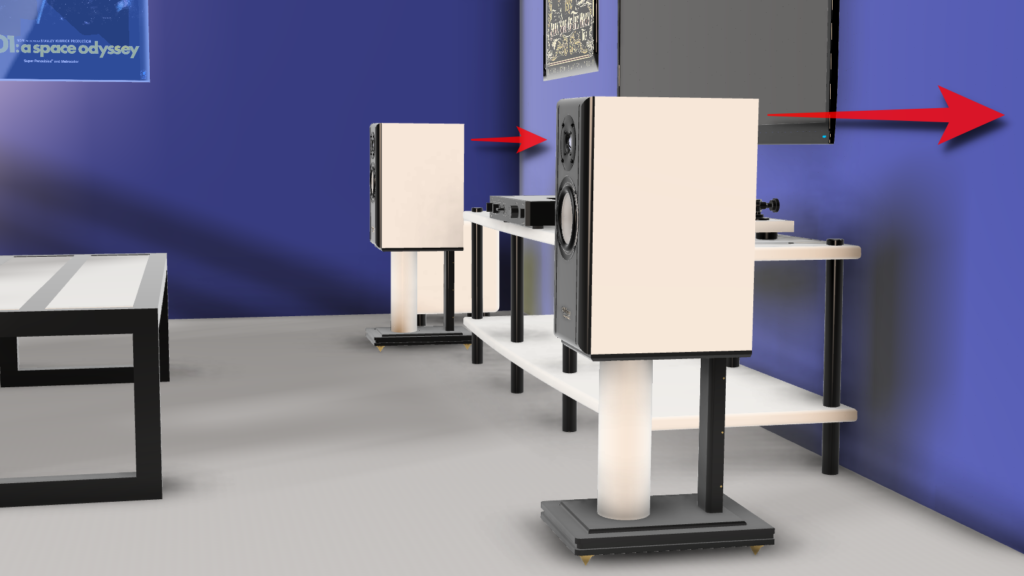
Unless your speakers are designed to sit close to a wall (some are) try to get them at least 8” or 20 cm out into the room. You can make huge differences in the sound of your room by doing this.
Make sure your speakers are the same distance away from back and side walls
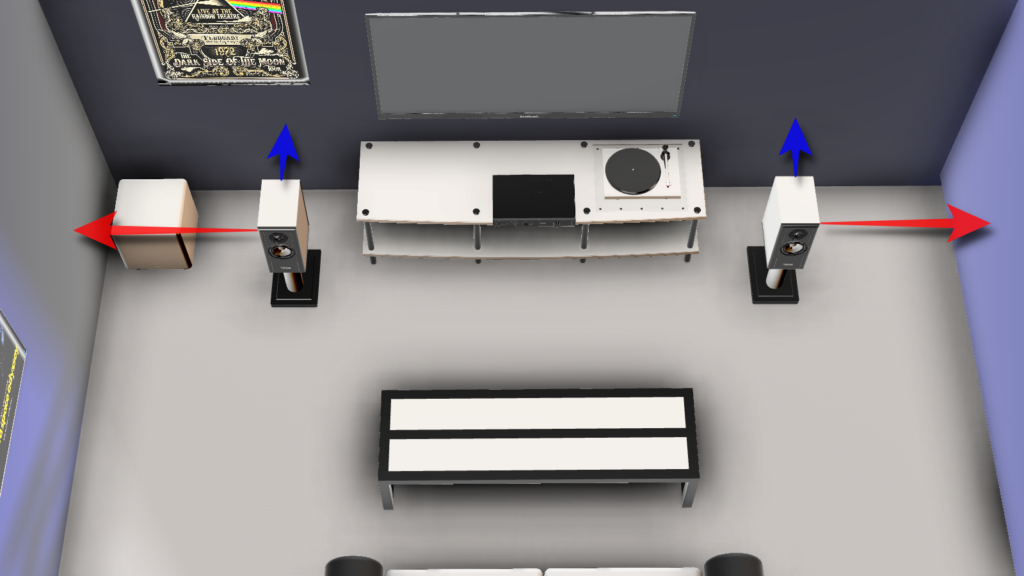
It’s amazing just how much difference 10 mm can make.
Both speakers should be at the same distance from the back wall. The same principle applies for the distance between the speakers and their respective side walls, if practical.
Remember to include the toe in and take a measurement from each side of the speaker to get things accurate.
Triangle and width

Try and sit in a “triangle” with your speakers and the back of your head (or slightly behind it) all being equal points.
Try not to stretch your speakers too far apart, speaker interaction and stereo in general is an illusion best created when your sources are less than 3 m apart.
Get something behind your listening position
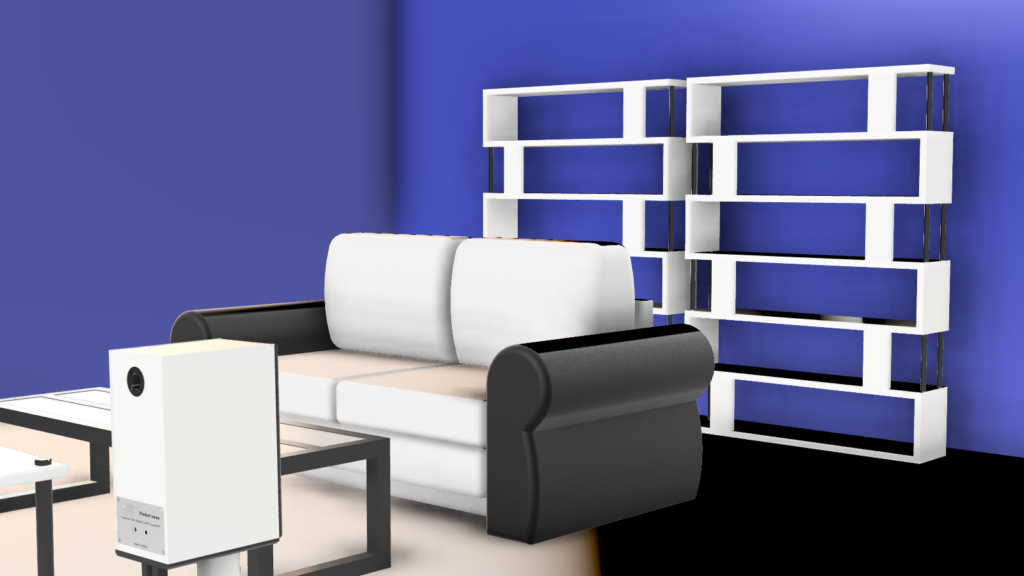
Something uneven, a bookcase or music storage or something that doesn’t present a hard, flat surface, a picture (not a mirror) a rug, some heavily textured wallpaper…anything other than a flat even surface…unless its concave, if its concave find something else!
Furniture!
Have some clutter, it’s the best, simplest and most effective form of room treatment you can have. A nice deep comfy sofa is so much better than a single chair, and you get to share the music with the other people in your household. What could be better than sharing your love of music?
Avoid having clean coffee table in front of you
If you have one, throw the remotes, a few books and magazines and some cups and “stuff” on it… The last thing you want is a hard, reflective surface directly in front of you.
Try not to put anything directly in front of a speaker
Clear at least 3 ft or 90 cm in front of your speakers, that includes chair arms, furniture and walls.
Experiment with toe in, toe out and straight-out speaker positions
Just because it’s de rigueur to toe a speaker inwards, and often recommended, many speakers do not interact well with this positioning. Never discount toe out either, with the right speakers and room interaction it can make a huge positive difference.
Forget trying to reach for that “studio sound”
It’s pointless and most people wouldn’t know their favourite tracks if they had heard them in a professional studio. A studio is designed to do an entirely different job, enjoyment is not it.
Isolate once!

If you must have isolation (and most people really don’t need it) do it once; less is more. Spikes are not isolators (although they do a reasonable job), they are not designed to isolate your speakers from the floor, they are designed to give a stable platform over carpets. Don’t have carpets? Then put your speakers on the floor on some felt so they don’t mark, maybe with a lump of Blu-tack to make sure they don’t move!
Check your connections!
Ensure you left speaker is on your left and so on, and that they are connected properly, with the correct wire in the correct hole. It really is amazing how often we see systems that are out of phase. Easily identifiable plugs and connectors help!
Stop listening to those who say that tone controls and equalisers don’t belong in Hi-Fi!
This is one of the most annoying and all-pervading myths and has made Hi-Fi elitist, entitled and obsessed. You’ll never go to a gig and hear an uncorrected room.
Try a subwoofer

Contrary to popular belief, few speakers can get low enough to do what a sub does efficiently. It’s not all about the bass either. By using a sub, you are enhancing your overall experience across the audible band, not subtracting. A well set-up sub is a joy in most systems.
Get a hearing test with a printout of the report
No two people hear things the same way. Hearing and perception are very personal things. Sometimes it takes a little jolt of reality to understand why something maybe doesn’t sound so good to you.
Enjoy your music!
It might be the simplest thing to do, but so many audiophiles obsess about their equipment and forget what they love: the music. We’ve heard that a snifter of your favourite aged spirit could be the best room treatment ever!


